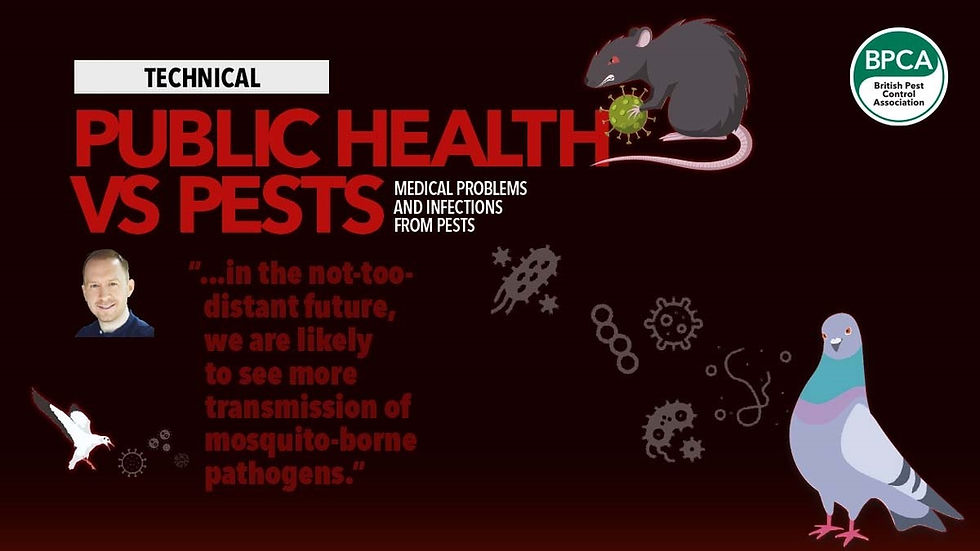The purpose of good pest management has always been to protect our health when certain animals come within problematic proximity to people.
BPCA asked Dr Alex Kew from University College London Hospitals to look at the public health risks that arise from common pests to better educate and protect our clients.
SPEED VIEW:
A study found at least 13 different infections in brown rats, with a few specimens having nine infections simultaneously
Leptospirosis can be picked up from food contaminated with rodent urine
Hantavirus symptoms include fever, low blood pressure, worsening shortness of breath and bloody or dark coloured urine that can look like Guinness
A common symptom of cryptosporidium infection is severe watery diarrhoea which can persist for two weeks and, on occasion longer, especially in those with weakened immune systems
The UK doesn’t have many insect-transmitted diseases that are found globally - however climate change may see many become endemic
Untreated Lyme disease can go on to affect the nervous system, joints and heart
Overseas pathogens can sometimes be easily transported to the UK by migratory birds.
Over the last 150 years or so, urban expansion has increased rapidly throughout the globe.
This has not only brought with it encroachment into the natural habitat of many wild organisms but has also provided highly adapted urban specialist species with an increasing amount of environment for them to exploit.
This increasing interaction, between humans and species considered pests, has also seen a marked increase in the number of zoonotic infections spread by these species
In this article, we highlight a few of the more commonly seen infections to be aware of when dealing with some urban pests in the UK.
We also indicate the signs that members of the public can look out for, depending on the pest encountered.
Birds
Much like rodents, there are many pathogens associated with birds and transmitted by birds that can affect humans. Unlike rodents, birds have wings, so pathogens associated with other countries can sometimes be easily transported to the UK by migratory birds.
We have not discussed every pathogen as it would make this article very long but have selected a few important infections to be aware of. These are split into bacteria and fungi. Avian flu is not discussed due to how it is managed and observed in the UK to prevent epidemic spread.
Bacteria
Psittacosis Caused by the bacterium Chlamydophila psittaci, transmission occurs after people come in contact with infected bird excrement or bird eye and beak discharge.
People tend to inhale the bacteria, which can go on to cause no illness at all or more severe infection ranging from a chest infection to systemic fever, enlarged organs and weakness.
Pet owners, poultry workers and employment with close proximity to birds, nests and nesting sites increases the risk of infection.
Antibiotics are effective at treating psittacosis.


Comments